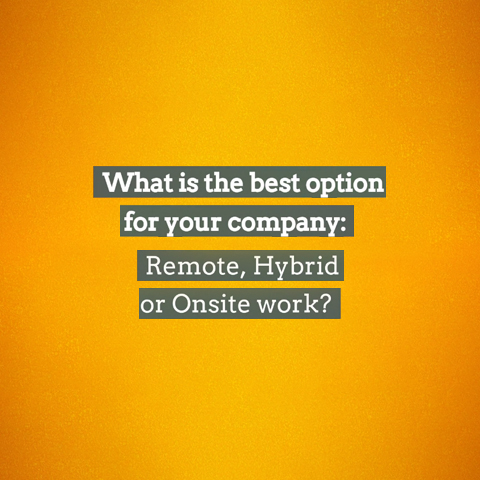What’s worse: not being able to hit capacity as customer demand increases, or being overstaffed?
"Both” is an understandable answer. But trying to staff up when the marketplace is heating up can be complicated and especially costly. Given the bumpy start to 2021, figuring out the best plan for this year could be difficult. While economic forecasters are bullish about growth, with Morgan Stanley projecting 6.4% global growth and U.S. GDP growth of 5% for 2021, it’s unclear when life and markets will approach pre-pandemic normalcy. In manufacturing the outlook is more bearish with Deloitte projecting - 5.4% growth for 2021, although total industrial capacity utilization has improved to 71.5% in September (up from 64.1% in April 2020). Despite the negative projection, many Deloitte executives have a positive outlook for 2021 and the trajectory of manufacturing could shift quickly as vaccine rollout accelerates.
In the meantime, maintaining staffing levels will only get more difficult when economic growth accelerates. To add to this challenge, the same problem of hiring and finding new people that we experienced pre-COVID has been further exasperated by the COVID stimulus package in 2020 along with the recent new administration’s upcoming boost in the unemployment benefits. This financial assistance could reduce motivation for former factory workers to come back to work in the near term.
That’s why it’s vital to get strategic about hiring in 2021.
Capacity traps ahead…
As you consider performance goals for 2021, what steps are you taking to ensure you can meet capacity for anticipated and best-case scenarios? If you’re not putting together a labor capacity plan now, then chances are that when you need more people you won’t be able to find the right talent. Especially in the case of skilled positions.
Just consider how absenteeism, turnover and burnout impacted capacity in 2020. Forced shutdowns aside, all kinds of manufacturers struggled to keep staffing levels aligned with demands. And with at least several months to get through before vaccine rollout begins to have an impact on day-to-day activities, the same issues will continue. Moreover, as things normalize later in the year, employees who have felt trapped in their current positions may look for new opportunities. It’s a situation where even if you have added or are adding headcount, you could still be stretched thin.
The desire it play it safe is understandable but what could it cost you?
With all of the unknowns right now, no one can blame you for wanting to wait and see how things play out before you make hiring moves. After all, there are a lot of different theories on hiring for capacity and it’s easy to subscribe to more conservative approaches in times like these.
But what about the potentially significant downsides of being too conservative? If you don’t time things exactly right, you could end up with less qualified hires or facing ongoing staffing shortages. Not to mention leaving substantial revenue on the table due to poor timing. The problem is that there are simply too many variables in the labor market right now to trust that a conservative strategy will work out.
Recommendation: Look at the data, then implement a versatile acquisition strategy. Avoid the ‘wait and see’ approach to your hiring plan
For the foreseeable future, absenteeism and turnover are likely to remain high. And with pandemic-related issues potentially complicating hiring processes, you need to stay well ahead of the curve for staffing demands. The key is to pay close attention to recent trends and most probable forecasts and then staff accordingly.
- To find the right balance, start with running analytics on staffing for the past 12 months.
- It’s worth considering how fluctuating headcount over various periods has already impacted your capacity.
- How many managers did you lose over the year?
- How often did people call in sick?
- How many employees were quarantined due to COVID-19 exposure?
- You also need to weigh that data against output expectations for facilities or operations in general and try to anticipate potential labor gaps.
In other words, based on business goals and projections and a realistic assessment of likely day-to-day headcount, you need to understand what you can count on in 2021. You may find that overstaffing may be the only way to maintain capacity in some areas. At least for the near term. After all, in 2021 people are not going to stop calling in sick anytime soon.
Get more strategic about hiring and onboarding
As we’ve mentioned before, hope is not a strategy. The problem with a wait-and-see approach to hiring is that it’s easy to wait too long and end up making panic hires of suboptimal candidates. Especially with respect to management and supervisory positions. For the foreseeable future, candidates will be evaluating positions differently than in the past, considering things like the ability to work from home, potential travel requirements and much more. Things may be less tricky for shop floor positions, but candidates are still dealing with and considering more variables than in “normal” times, including health concerns, new or extended stimulus benefits, and added challenges around relocation for the near term.
Fortunately, once you’ve figured out when you are likely to need more people, you can give yourself enough runway to find ideal candidates. Instead of running last-minute ads, you can post jobs far enough ahead of time (based on the complexity of the hiring process for the particular position) to vet multiple candidates and choose from your best options. At the same time, you can begin weeding out C and D players who you kept around to get you through rough patches. Now it’s time to get back to brass tacks and focus on what’s best for the business.
Planning ahead gives you another key advantage—the option to look for versatile players and stop hiring so many one-dimensional players. In baseball, scouts call players with speed, power, hitting average, arm strength, and good fielding “five-tool” players. Filling out your staff with multiple-tool or utility players is a great way to temper concerns around overstaffing. For example, if you find a manager with both engineering and supply chain or operations and supply chain experience that person could more easily pivot job responsibilities based on shifting business needs. What’s great is that by planning ahead for hiring, you can give yourself more time to find versatile candidates.
One final point: don’t stand in your own way. We regularly see clients with inflexible hiring policies overlooking promising candidates. Yes, it’s critical to hire effectively. But sometimes you need to get creative to expand your options.
Consider the example of a client who had very specific experience requirements for every candidate who applied, which also limited their candidate pool.
- After struggling to staff to capacity, we encouraged them to think differently and do things like build out a mechanical aptitude test to evaluate a candidates’ ability to be trained (and also adjust training programs accordingly).
- It turned out that there were lots of great resources in the area that they were overlooking because of an unnecessarily rigid mindset.
See your hiring processes through a new lens
In times like these, finding the right balance with staffing levels can seem like a lost cause. But you don’t have to settle for teams that are stretched too thin or people twiddling their thumbs. With our deep operational and talent management expertise, TBM can provide an outside perspective that helps you see your talent management needs and processes in a new light. By stepping outside of the box to do root cause analysis of what’s happening and why with hiring, we can arm you with the facts you need to get aggressive with staffing process improvements. And by making the right moves, this can be the best year yet.





